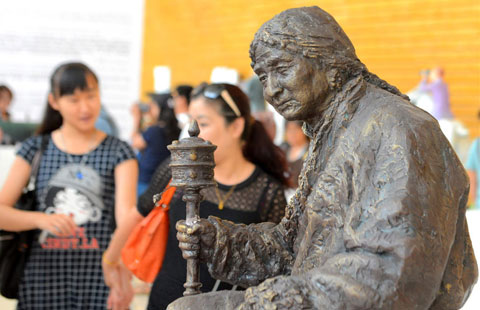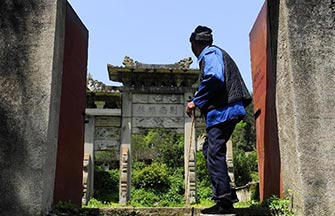Up the right alley in hutongs
By Wang Kaihao ( China Daily ) Updated: 2015-08-25 07:53:54
 |
|
The Nanluoguxiang area in Beijing is a new center for craftsmen to revive cultural heritage such as snuffbox miniature paintings and figurines (above). [Wang Kaihao / China Daily] |
High property prices in the area have stood in the way of the cultural industry there, Xu says, explaining why Nanluoguxiang has changed from a center of culture into an entertainment area lined with food stalls and bars.
In April the Ministry of Housing and Urban-Rural Development and the State Administration of Cultural Heritage jointly announced the names of China's 30 most significant streets, celebrated for their history and culture. But Nanluoguxiang was not among them.
The authorities cleared more than 70 "low-quality stores" in Nanluoguxiang last year to gain more space for cultural entrepreneurs to rebuild the area's reputation. The chamber of commerce also invested 60 million yuan in the new intangible cultural heritage studio without charging any rent from Peng or other inheritors.
Instead, a percentage of the revenue from sales will be given to the chamber of commerce.
"This may be a solution to nurture the cultural industry," Xu says, adding that he is prepared to copy the studio model elsewhere in Nanluoguxiang and expand outside the area, too.
Though government-leading intangible cultural heritage parks are common in China, Xu is considering a long-term mechanism that will make full use of industry bodies and reply more on the market.
"Those parks will be easily influenced by decision-makers' preferences. The cultural industry needs more persistence," Xu says.
Whether the Nanluoguxiang experiment works for the revival of Beijing's lost cultural elements, only time will tell.
Related:
|
|
|
|
|
|
|
|






















 Raymond Zhou:
Raymond Zhou: Pauline D Loh:
Pauline D Loh: Hot Pot
Hot Pot Eco China
Eco China China Dream
China Dream China Face
China Face






